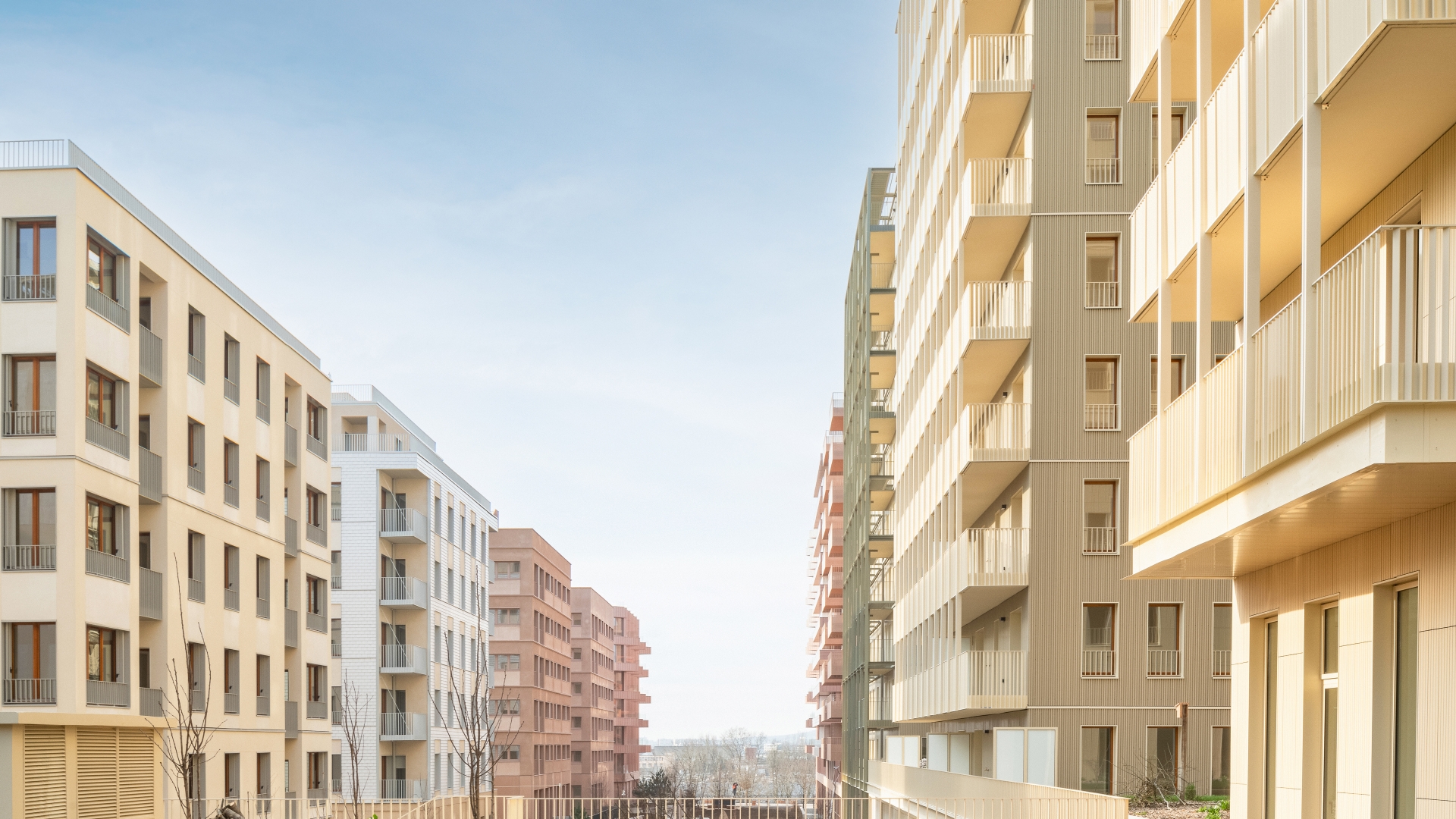
Residential buildings are increasingly being built to higher sustainability standards – such as the ambitious construction and repurposing of a residential complex in Paris. Sika has reduced the carbon footprint of the concrete in this project by nearly 40%, through a smartly integrated admixture solution.
Initially built to host approximately 25,000 athletes and their staff, this large residential complex in Paris spans 52 hectares — an area comparable to 70 football fields — across the communes of Saint-Denis, Saint-Ouen-sur-Seine, and Île-Saint-Denis. Following on from its original purpose, the site is now being transformed into a contemporary residential complex, set to open in 2025.
From the outset, the project was designed to meet ambitious sustainability standards. The objective was to reduce the carbon footprint by 40% compared to traditional construction methods. Plans included the use of biodegradable insulation and renewable energy to power a significant proportion of the construction activities.
Michele Duval, Concrete Director at Sika France, highlights the scale and impact of Sika’s contribution: “Between 2022 and 2024, Sika provided around 300,000 liters of admixtures to produce approximately 120 km3 of low-carbon concrete. This led to a 40% reduction in CO2 emissions, while maintaining high performance, strength, and workability. To understand the significance of Sika’s role, it is important to consider the challenges of producing and building with low-carbon concrete, while still maintaining the construction planning” – especially in a project subject to urgent deadlines, tight logistics, and the harsh conditions of a cold, damp Parisian winter.
Early strength made possible
The low-carbon concrete was produced on site in dedicated mobile batching plants with a capacity of up to 75 m³/hour, while maintaining strict restrictions for noise, water, and dust. The production of this low-carbon concrete had to also allow for the required 16-hour/day construction cycle to be maintained, even during the winter months.
Sika’s solution ensured that the construction process could continue seamlessly, nearly as it would with conventional concrete. The typical demolding time of 16 hours is usually sufficient for conventional concrete to achieve the necessary early strength for safe removal. However, low-carbon concrete tends to be less reactive than standard concrete, which can result in slower early strength development. Sika has tackled this challenge with innovative admixtures. In the Paris project, these solutions have helped the low-carbon concrete achieve the required early strength within 16 hours, matching the performance of conventional concrete.
Sika solutions enable flexibility
The Sika® Mix & Flow system simplified the low-concrete production. This concept consists of three versatile components, each tailored to address specific challenges in the concrete mixing and application. “Sika® Mix & Flow enabled the concrete supplier to optimize the carbon footprint of various concrete mix designs,” explains Michele.
“Three types of cement were used: one with the lowest carbon footprint, another offering a balance between carbon reduction, performance, and temperature adaptability, and a third designed for high performance. This approach ensured easy adaptation to on-site temperature conditions.”
The Paris project bears witness to the significant value Sika adds in complex projects, by working closely with the contractors and building owners. In addition to supplying high-performance products, the company thinks outside the box to provide intelligent systems and solutions, simplifying the construction process.
